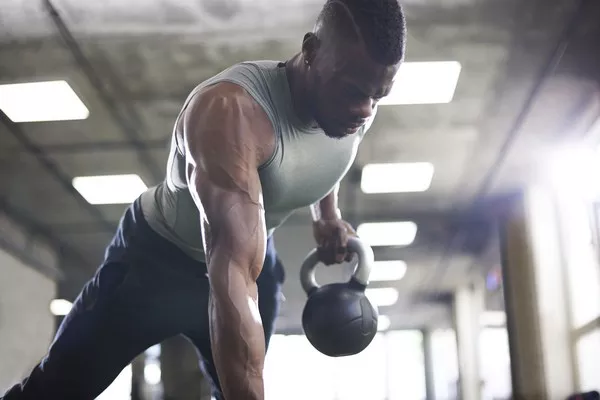Strength training is a cornerstone of physical fitness, offering a myriad of benefits ranging from increased muscle mass and bone density to improved metabolic health and enhanced functional strength. While there are countless exercises to choose from, certain movements stand out as fundamental pillars of strength training. In this article, we delve into the five basic strength training exercises that form the foundation of any well-rounded strength training program, exploring their benefits, proper technique, and variations.
Understanding the Importance of Strength Training
Before delving into the specifics of the five basic exercises, it’s essential to understand why strength training is so important for overall health and well-being. Strength training, also known as resistance training, involves using external resistance – such as weights, resistance bands, or body weight – to challenge and overload the muscles, leading to adaptations that result in increased strength, endurance, and muscle mass.
In addition to improving physical performance, strength training offers a host of health benefits, including:
Improved Bone Health: Strength training helps to increase bone density, reducing the risk of osteoporosis and fractures, particularly in older adults.
Enhanced Metabolic Health: Building lean muscle mass through strength training can boost metabolism and improve insulin sensitivity, aiding in weight management and reducing the risk of chronic diseases such as type 2 diabetes.
Increased Functional Strength: Strength training improves functional strength, making everyday tasks such as lifting, carrying, and climbing stairs easier and more efficient.
Injury Prevention: Strengthening the muscles and connective tissues can help prevent injuries, particularly in athletes and individuals engaged in physically demanding activities.
Improved Mental Health: Strength training has been shown to reduce symptoms of depression and anxiety, enhance cognitive function, and improve overall mood and well-being.
Given these compelling benefits, incorporating strength training into your fitness routine is essential for achieving optimal health and longevity.
The Five Basic Strength Training Exercises
Squat:
The squat is often referred to as the “king of exercises” due to its effectiveness in targeting multiple muscle groups simultaneously, including the quadriceps, hamstrings, glutes, and core.
To perform a squat, stand with your feet shoulder-width apart, toes slightly turned out. Keeping your chest up and your back straight, lower your body by bending your knees and pushing your hips back as if sitting into a chair. Lower until your thighs are parallel to the ground, then push through your heels to return to the starting position.
Variations: Front squat, goblet squat, sumo squat.
Deadlift:
The deadlift is a compound exercise that primarily targets the posterior chain, including the hamstrings, glutes, lower back, and upper back.
To perform a deadlift, stand with your feet hip-width apart, toes pointing forward. Bend at the hips and knees to lower your body and grasp the barbell with an overhand grip, hands slightly wider than shoulder-width apart. Keeping your back flat and chest up, drive through your heels to lift the barbell off the ground, extending your hips and knees until you are standing tall. Lower the barbell back to the ground with control.
Variations: Romanian deadlift, sumo deadlift, trap bar deadlift.
Bench Press:
The bench press is a classic upper body exercise that targets the chest, shoulders, and triceps.
To perform a bench press, lie flat on a bench with your feet planted firmly on the ground. Grip the barbell with your hands slightly wider than shoulder-width apart, palms facing away from you. Lower the barbell to your chest, keeping your elbows close to your body, then push the barbell back up until your arms are fully extended.
Variations: Incline bench press, decline bench press, dumbbell bench press.
Overhead Press:
The overhead press, also known as the shoulder press, targets the deltoid muscles of the shoulders as well as the triceps.
To perform an overhead press, stand with your feet shoulder-width apart, holding a barbell or pair of dumbbells at shoulder height with your palms facing forward. Press the weight directly overhead until your arms are fully extended, then lower the weight back down to shoulder height with control.
Variations: Seated overhead press, Arnold press, push press.
Pull-Up:
The pull-up is a challenging bodyweight exercise that targets the muscles of the upper back, including the latissimus dorsi, rhomboids, and traps.
To perform a pull-up, grip a pull-up bar with your hands slightly wider than shoulder-width apart, palms facing away from you. Hang with your arms fully extended, then pull your body up until your chin clears the bar. Lower yourself back down with control until your arms are fully extended.
Variations: Chin-up (palms facing towards you), neutral grip pull-up, assisted pull-up.
Incorporating the Five Basic Exercises into Your Routine
To maximize the benefits of the five basic strength training exercises, it’s important to incorporate them into a well-rounded workout routine that includes a variety of movements and muscle groups. Here are some tips for integrating these exercises into your training program:
Frequency: Aim to perform each of the five basic exercises at least once or twice per week, depending on your fitness level and goals.
Progression: Gradually increase the weight or resistance used for each exercise as you become stronger and more proficient. Progressive overload is key to continued improvement and growth.
Variety: Don’t be afraid to mix things up by incorporating different variations of each exercise or experimenting with different equipment, such as kettlebells, resistance bands, or suspension trainers.
Rest and Recovery: Allow adequate time for rest and recovery between strength training sessions to allow your muscles to repair and grow. Aim for at least 48 hours of rest between workouts targeting the same muscle groups.
Form and Technique: Focus on maintaining proper form and technique for each exercise to minimize the risk of injury and maximize results. If you’re unsure about proper form, consider working with a certified personal trainer to ensure you’re performing each exercise safely and effectively.
Conclusion
In conclusion, the five basic strength training exercises – squat, deadlift, bench press, overhead press, and pull-up – form the cornerstone of any effective strength training program. By incorporating these compound movements into your routine, you can build a strong, resilient body that is capable of handling the demands of everyday life and beyond.
Whether you’re a seasoned lifter or just starting out on your fitness journey, mastering the fundamentals of strength training will set you on the path to success. So, grab a barbell, find a pull-up bar, and get ready to unlock your full potential through the power of strength training.
[inline_related_posts title=”You Might Be Interested In” title_align=”left” style=”list” number=”6″ align=”none” ids=”8513,8510,8507″ by=”categories” orderby=”rand” order=”DESC” hide_thumb=”no” thumb_right=”no” views=”no” date=”yes” grid_columns=”2″ post_type=”” tax=””]
































